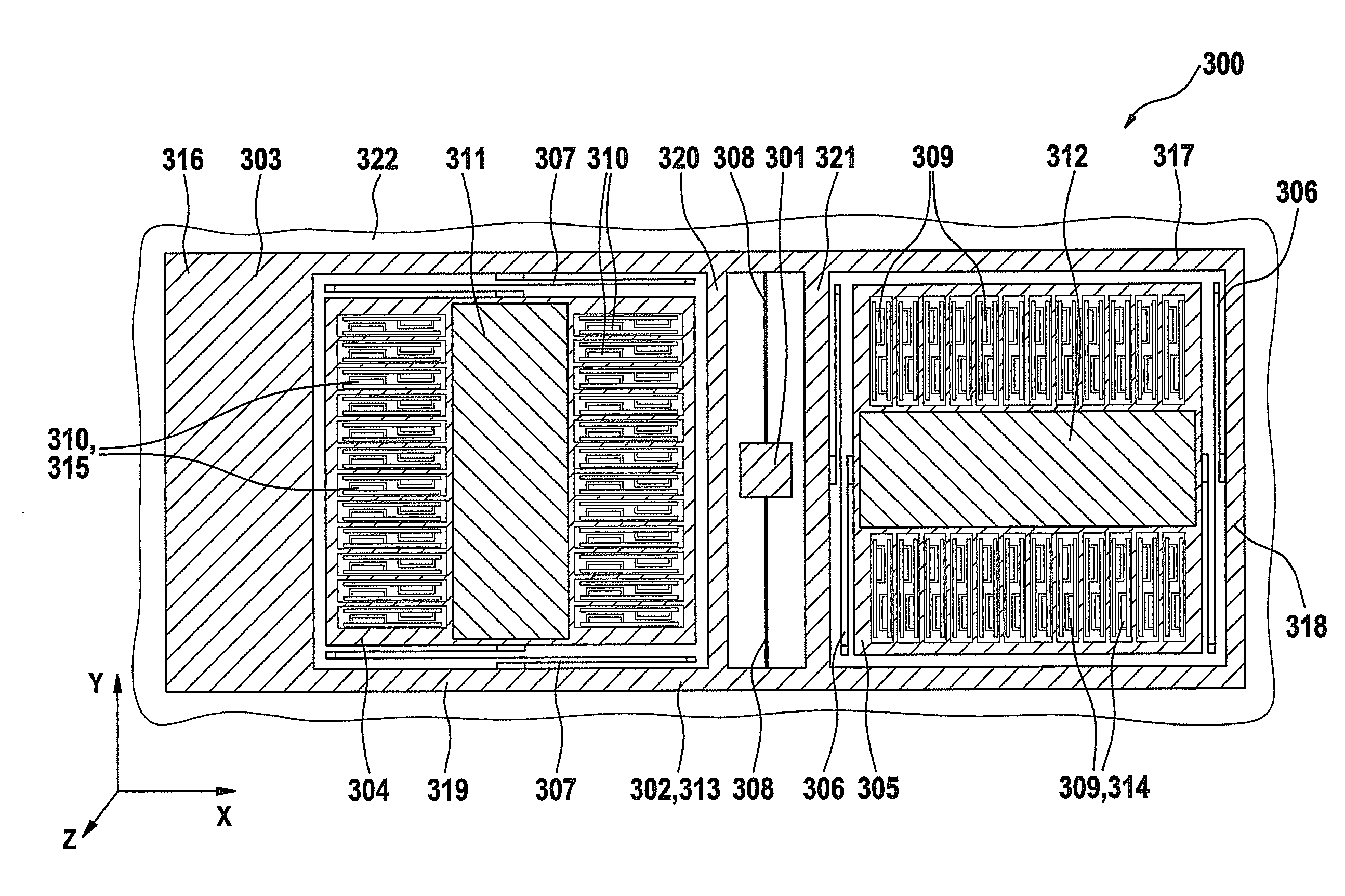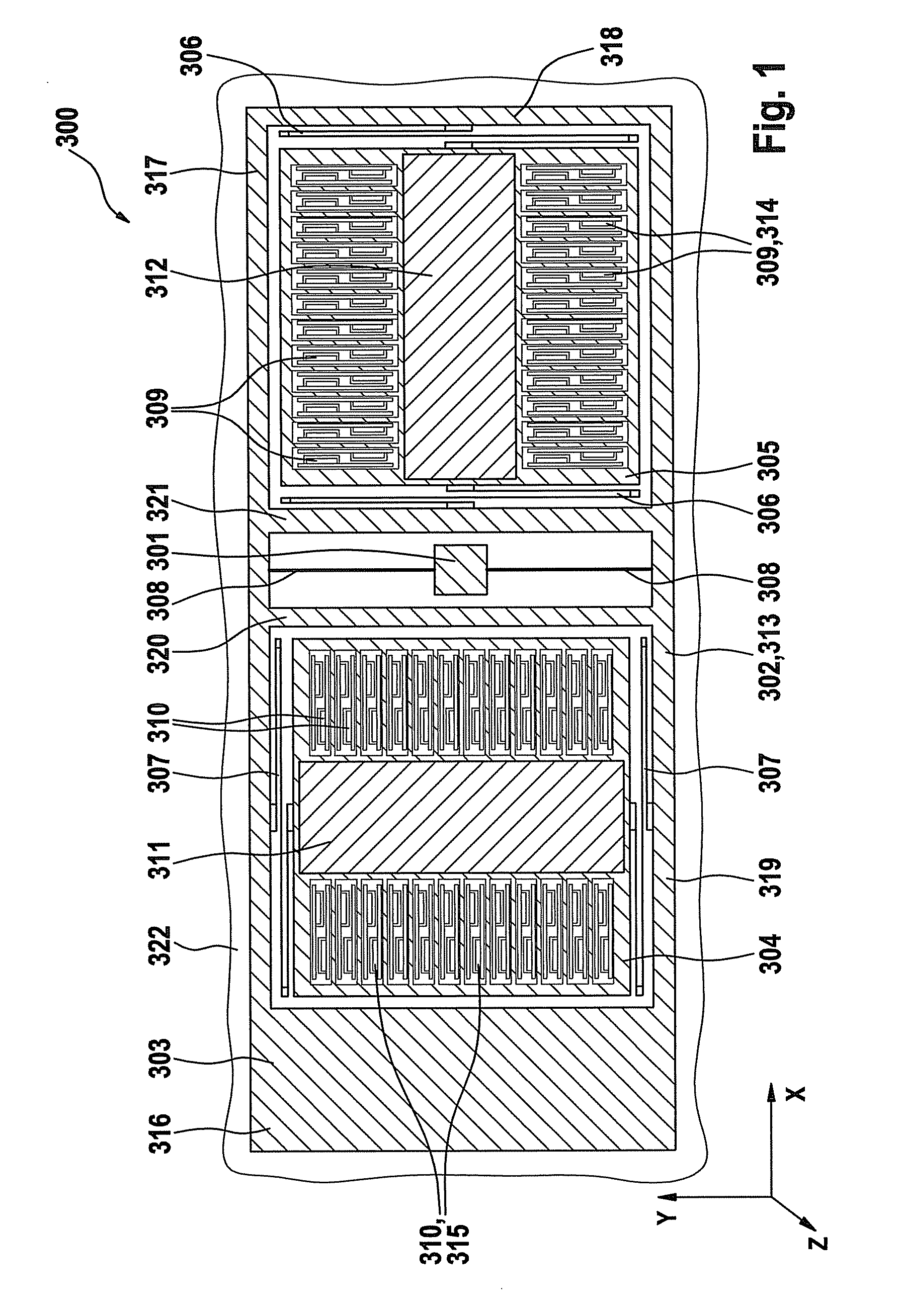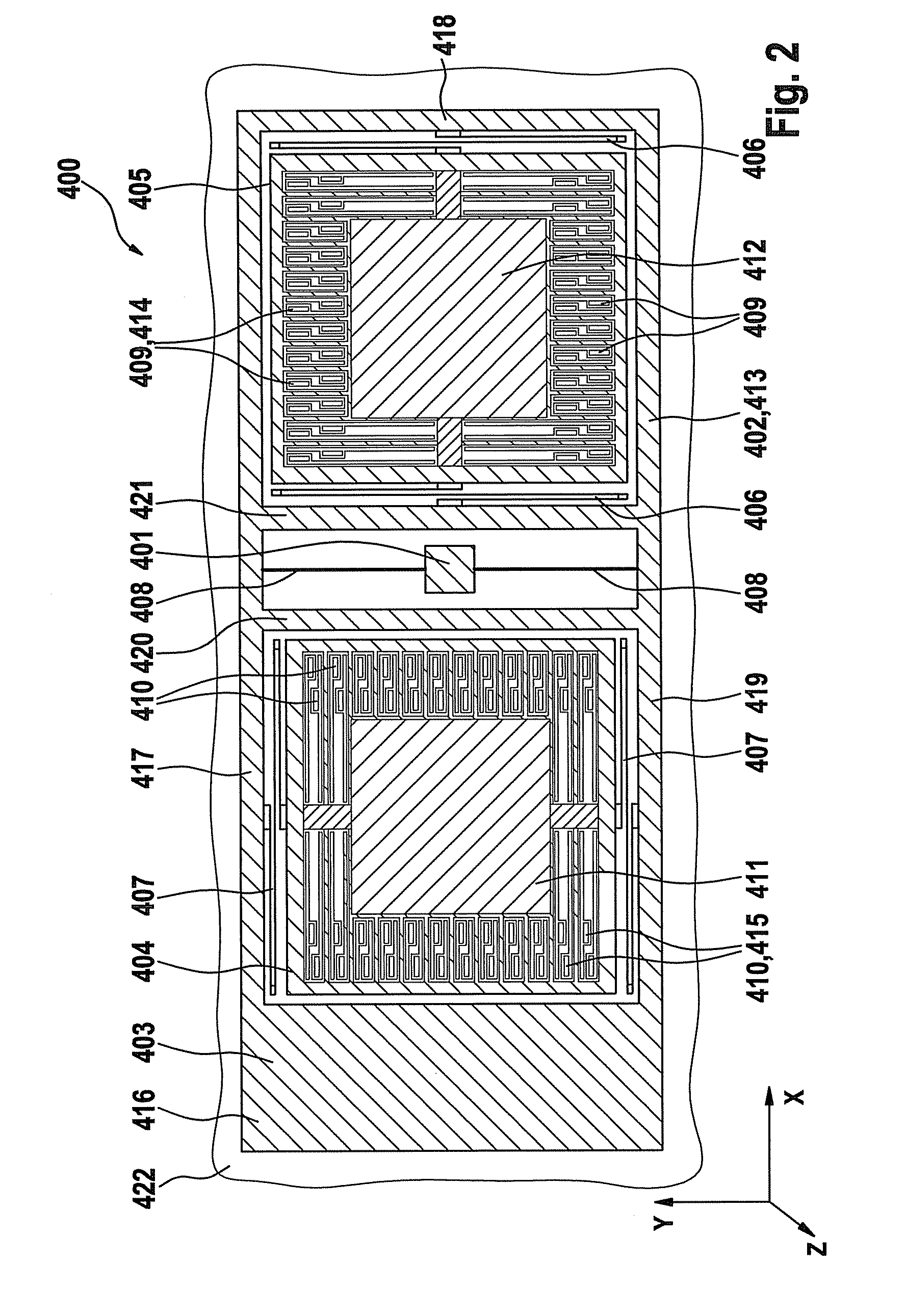Triaxial acceleration sensor
a technology of acceleration sensor and triaxial acceleration, which is applied in the direction of speed/acceleration/shock measurement, measurement devices, instruments, etc., can solve the problems of large space requirements and comparatively large acceleration sensors
- Summary
- Abstract
- Description
- Claims
- Application Information
AI Technical Summary
Benefits of technology
Problems solved by technology
Method used
Image
Examples
Embodiment Construction
[0015]FIG. 1 shows a schematic representation of a first specific embodiment of an acceleration sensor 300, which is situated in the z direction above a surface of a substrate 322, lying in the x-y plane. Acceleration sensor 300 is suitable for detecting accelerations in all three spatial directions x, y, z. Acceleration sensor 300 is manufactured, for example, from a silicon substrate, as a micromechanical component.
[0016]Acceleration sensor 300 includes an external frame 313, which is situated in the x-y plane. External frame 313 has a rectangular basic shape. The outer edges of external frame 313 are formed by a first frame part 316, a second frame part 317, a third frame part 318, and a fourth frame part 319. First frame part 316 and third frame part 318 are oriented parallel to the y axis. Second frame part 317 and fourth frame part 319 are oriented parallel to the x axis. The area enclosed by first, second, third, and fourth frame parts 316, 317, 318, 319 is subdivided into th...
PUM
 Login to View More
Login to View More Abstract
Description
Claims
Application Information
 Login to View More
Login to View More - R&D
- Intellectual Property
- Life Sciences
- Materials
- Tech Scout
- Unparalleled Data Quality
- Higher Quality Content
- 60% Fewer Hallucinations
Browse by: Latest US Patents, China's latest patents, Technical Efficacy Thesaurus, Application Domain, Technology Topic, Popular Technical Reports.
© 2025 PatSnap. All rights reserved.Legal|Privacy policy|Modern Slavery Act Transparency Statement|Sitemap|About US| Contact US: help@patsnap.com



